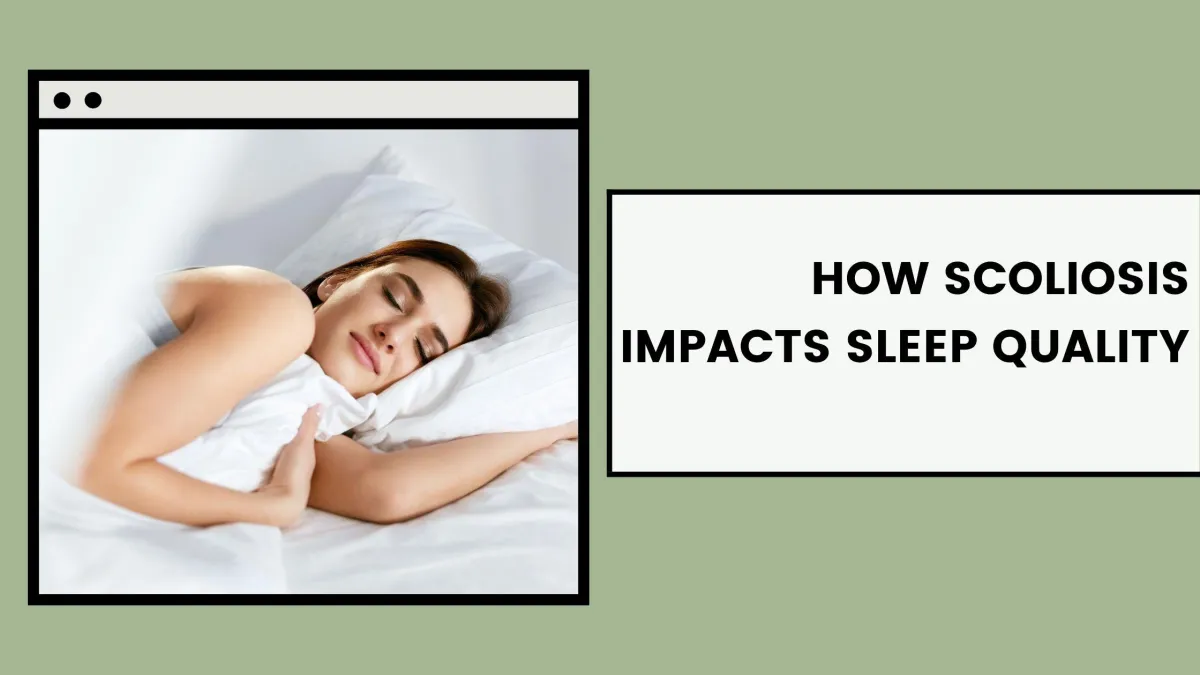Check Out The Latest Blog Posts To Learn More

How Scoliosis Impacts Sleep Quality | Strength & Spine
How Scoliosis Impacts Sleep Quality
Sleep is a core component of our wellness, serving as the body’s natural reset button every night. But what if you cannot find that comfortable spot in bed? For millions living with scoliosis, a condition that causes a sideways curvature of the spine, sleep can become a nightly battle. This in-depth exploration uncovers the intricate relationship between scoliosis and sleep, shedding light on how this spinal condition disrupts one of the most critical aspects of our health.
Understanding Scoliosis: A Twist in the Tale
Before we plunge into the intricacies of sleep quality, it's important to lay the foundation by understanding scoliosis itself. Scoliosis is characterized by an abnormal curve of the spine, which not only creates an S or C shape but also rotates the vertebrae. This condition is relatively common, with approximately 3% of the population affected, according to the American Association of Neurological Surgeons. The causes are somewhat mysterious, with some cases being idiopathic, while others are related to congenital spine abnormalities, neuromuscular conditions, or genetic predisposition.
The degree of severity varies between individuals, with some cases warranting treatment, including bracing or spinal fusion surgery. The onset can be at a young age — adolescents are routinely screened for scoliosis — or it can develop or worsen into adulthood.
Effects of Scoliosis on the Quality of Sleep
Scoliosis doesn’t just affect the day; it can cast a shadow over the night as well. The condition’s impact on sleep is multifaceted, often presenting as a combination of disrupted sleep patterns, increased pain and discomfort, breathing difficulties, and mental health impacts.
Disrupted Sleep Patterns
The misalignment of the spine caused by scoliosis can lead to the misalignment of the body during sleep. This can lead to increased tossing and turning as the body inherently tries to find positions that alleviate pressure and discomfort. Additionally, individuals with scoliosis may experience difficulties falling asleep or staying asleep due to the pain and discomfort associated with the condition.
Pain and Discomfort
Sleeping on misaligned or pressure-affected vertebrae can exacerbate pain levels, causing a perpetual cycle of discomfort and unrest. The discomfort and pain are not limited to the spine, as scoliosis can influence the entire musculoskeletal system, leading to strained muscles, pinched nerves, and spinal arthritis.
Breathing Difficulties
Scoliosis can also affect the expansion of the chest cavity, which in turn can affect breathing. Given that sleep is a time when the body heals and rejuvenates, any restriction in breathing can significantly reduce the quality of rest and interfere with the body's recovery processes.
Impact on Mental Health and Overall Well-being
The chronic sleep deprivation caused by scoliosis can weigh heavily on mental health. Persistent sleep disturbances have been linked to an increased risk of developing anxiety and depression, conditions that are already higher in prevalence among those with chronic pain.
Management Strategies for Sleep and Scoliosis
Managing scoliosis-related sleep issues involves a combination of medical interventions targeting the spinal condition and lifestyle adjustments. With a proactive approach, individuals with scoliosis can significantly improve their quality of sleep and, subsequently, their quality of life.
Medical Interventions
Orthopedic interventions such as bracing and surgery are often deployed to prevent the progression of scoliosis and to straighten and stabilize the spine. While these surgeries can be life-changing in terms of function and pain management, they also require a period of recovery that may impact sleep in the short term.
Lifestyle Adjustments
The practice of daily stretches and exercises, customarily part of physical therapy regimens for scoliosis, can help maintain flexibility and reduce muscle imbalances. Incorporating ergonomic furniture and sleeping surfaces can also support the spine, potentially reducing discomfort.
Sleep Hygiene Tips for Scoliosis Patients
Adopting good sleep hygiene practices is essential for anyone looking to optimize their rest, but for those with scoliosis, these practices can be especially beneficial:
Supportive Bedding: Invest in high-quality mattresses and pillows designed to support the spine. For some, memory foam or adjustable beds might be ideal to accommodate curvature. We recommend the Pillow Pod. Use our code strengthandspine10 for 10% off.
Pre-Sleep Routines: Develop a relaxing pre-sleep routine, such as gentle stretching or a warm bath, to calm the body and mind before bedtime. Try practicing breathing exercises, focusing on expanding the lower ribs to help relax the body and get better breathing mechanics for sleep.
Bedtime Posture: Be mindful of your posture in bed. Lying on your side with a pillow between your knees or sleeping on your back with a pillow under your knees can help maintain the natural curves of the spine. If you're sleeping on the convex side of your curve (more prominent side), you can add a flat pillow to help support. Try not to add pillows under your concave areas (collapsed in) area of your curve.
Temperature and Environment: Create a comfortable sleeping environment that is cool, quiet, and dark, as temperature and sensory irritants can cause sleep disturbances in scoliosis patients, similar to the general population.
Uncovering Research Insights
Recent research has shed new light on the connection between scoliosis and sleep disturbances. One study, published in the Journal of Pediatric Orthopaedics, observed a higher prevalence of sleep disturbances in adolescents with idiopathic scoliosis compared with controls. Similarly, an article in the Spine Journal explored the effects of scoliosis on sleep and the quality of life, bringing forth the importance of early detection and treatment to prevent these complications.
Additionally, investigations into the effectiveness of different management strategies, such as bracing and corrective surgeries, have provided insights into not only the treatment of the spinal condition but also the resultant impact on sleep. Early detection and intervention, it seems, not only preserve spine health but also safeguard the sleep of those affected.
The Vital Importance of Addressing Sleep Issues in Scoliosis
Addressing the sleep disturbances associated with scoliosis is not merely about comfort; it's about enabling the body's capacity to heal and function optimally. The intervention is crucial for preventing the long-term consequences that can stem from chronic sleep deprivation, such as cardiovascular issues, metabolic disturbances, and cognitive impairments.
For those with scoliosis, achieving restful sleep can be a complex challenge, as it often involves navigating a myriad of treatment options and lifestyle adjustments. Professionals in the fields of orthopedics, sleep medicine, and physical therapy can offer a multidisciplinary approach, providing personalized care plans that support each patient’s unique needs.
Conclusion: On the Quest for Better Sleep in Scoliosis
Sleep disturbances are a significant aspect of life affected by scoliosis, but they need not be an unchangeable part of the condition. By staying informed, exploring a range of management strategies, and seeking the right professional help, individuals with scoliosis can carve out a path to better sleep and, in turn, better health.
Eradicating sleep problems is a multifaceted endeavor. From medical professionals to individuals themselves, a collaborative effort toward understanding the nuances of sleep and scoliosis could open doors to innovations in treatment and management. If you’re on the sleep-deprived end of scoliosis, don’t lose hope; a good night's sleep might be closer than you think.
WE ARE
Strong with Scoliosis
Start today on an exercise program that helps you become empowered, strong, and confident in your scoliosis curve.
FIND US
Strength and Spine
Online Sessions and Coaching
We work with clients all over the world
*Please contact us for in-person appointments*

